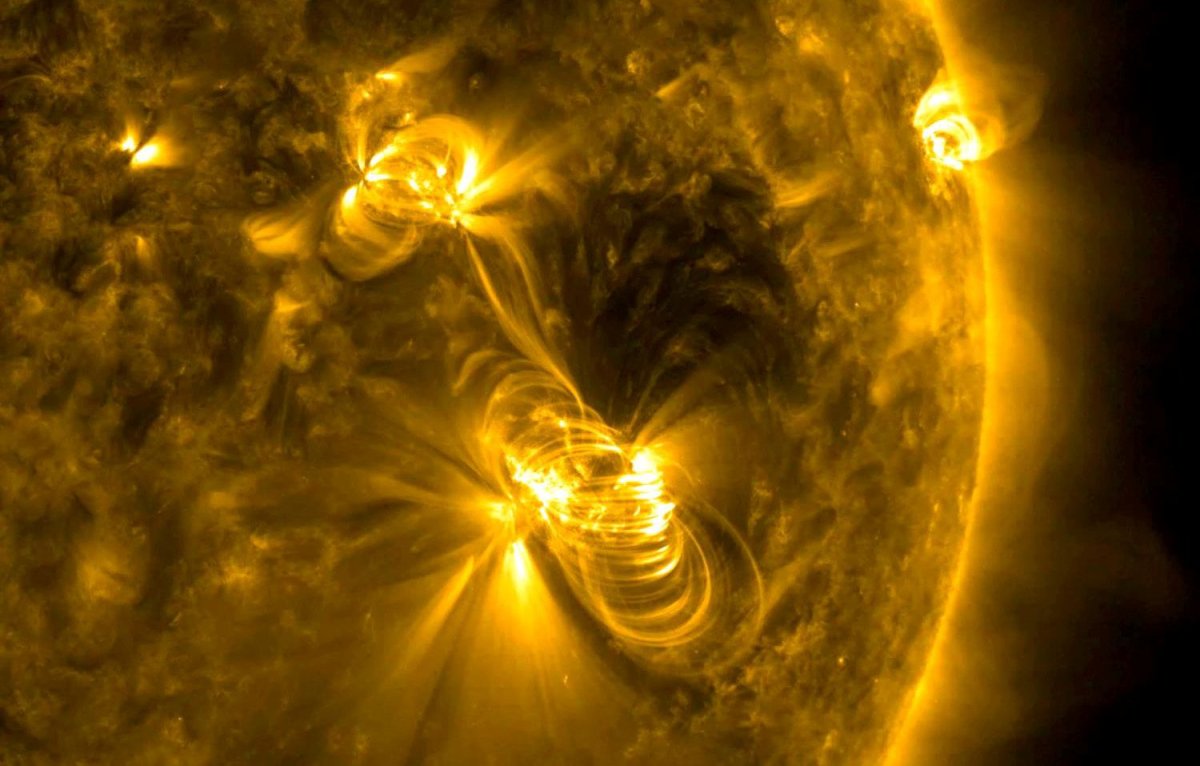Seven new large extragalactic radio sources, or giant radio galaxies, were discovered—and astronomers were able to find them by looking at images from radio surveys.
Radio galaxies emit more strongly in radio wavelengths and giant radio galaxies, or GRGs, are classified as those that stretch at least 3.3 million light-years wide. Mexican astronomers Jonatan Rentería Macario of the Autonomous University of Zacatecas and Heinz Andernach of the University of Guanajuato analyzed images from two radio surveys covering large areas of sky. From the data, researchers found over 2,000 extended features—indicating the presence of large radio galaxies. Those 2,000 features allowed Macario and Andernach to find seven new GRGs.
"Our results show that current and forthcoming low-frequency surveys with excellent sensitivity to low surface brightness features have a large potential to discover significant amounts of giant radio galaxies as well as sources of complex or currently unknown types of morphologies," the authors concluded in their paper.

The largest radio galaxy that they discovered was about 8.44 million light-years wide, which is one of the biggest known to date. The largest GRG that has been previously discovered is approximately 16 million light-years.
The smallest GRG discovered was around 3.35 million light-years, and the remaining were between 4.08 and 5.09 million light-years. Other radio sources found by the two surveys will require further inspection, though they could reveal more radio galaxies including radio-faint and distant ones.
Their findings show that there are more GRGs in the universe than previously understood.
"The fundamental conclusion is that there are probably quite a few of these in the universe," said Ed Churchwell, emeritus professor of astronomy at the University of Wisconsin-Madison. "They're more common than we thought before."
Plus, the methods that Macario and Andernach used to find the galaxies show a new way to identify these objects with just a telescope and observation time, said Churchwell.

University of Berkeley's Search for Extraterrestrial Intelligence Research Center noted that this type of radio galaxy does not have direct implications in the search for alien life, but explained that GRGs can be particularly difficult to discover due to their vast expanse.
"Andernach and his group have a good track record in visually identifying these large objects from survey data—the fact that they are so extended makes them a little challenging to pick out," Steve Croft from Berkeley's SETI Research center said in an email. "Astronomers do already know quite a lot about radio galaxies.
"A good analogy might be that we know quite a lot about trees, but it's still interesting if someone finds a few very large examples of a particular species of tree."
Uncommon Knowledge
Newsweek is committed to challenging conventional wisdom and finding connections in the search for common ground.
Newsweek is committed to challenging conventional wisdom and finding connections in the search for common ground.
About the writer
Sydney Pereira is a science writer, focusing on the environment and climate. You can reach her at s.pereira@newsweekgroup.com.
To read how Newsweek uses AI as a newsroom tool, Click here.








